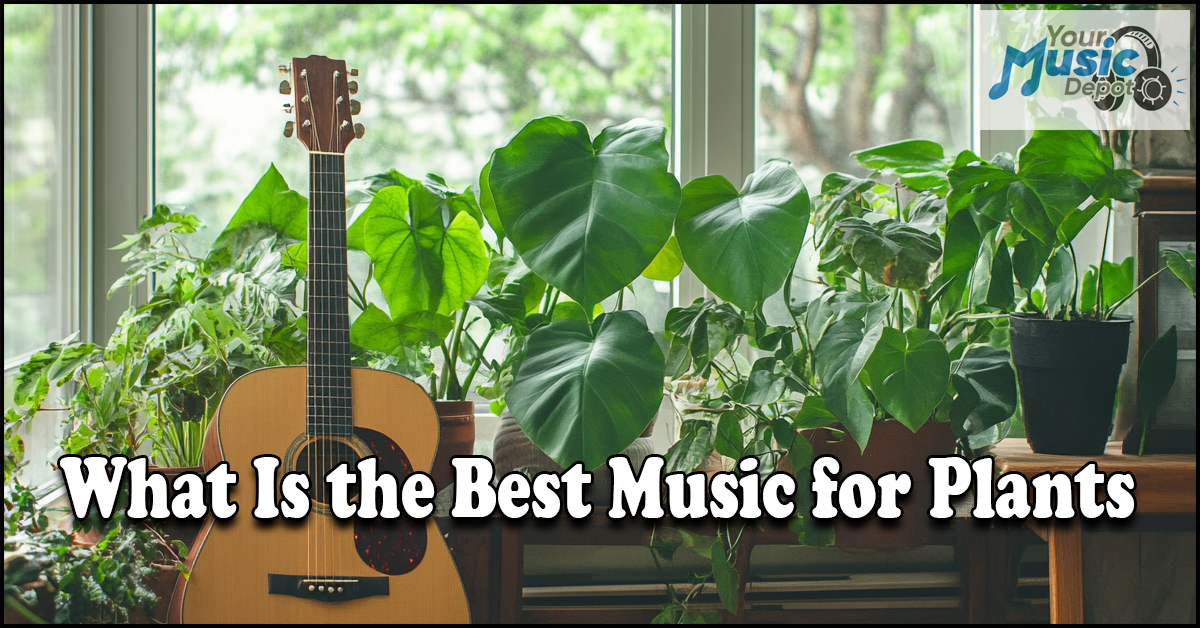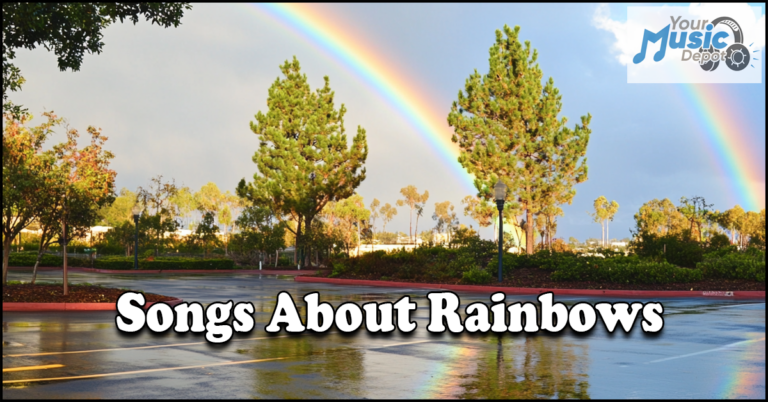
The relationship between music and plants has long been a topic of interest for researchers and gardening enthusiasts. Can music really have an impact on plant growth and well-being? Let’s explore the fascinating world of gardening with music and discover the benefits of incorporating melodic sounds into your plant care routine.
Studies and experiments have shown that plants have a unique response to different types of music. In Dorothy Retallack’s greenhouse experiments, plants leaned towards classical and jazz music while avoiding rock music. T.C. Singh’s research with Indian plants revealed higher harvests when exposed to certain types of music. George Smith’s work on corn and soybeans demonstrated increased growth and yields when plants were exposed to music. These findings suggest that music can play a significant role in promoting plant health and growth.
Our Main Points:
- Music can stimulate plant growth and enhance overall plant health.
- Classical and jazz music have been found to have positive effects on plant growth.
- Plants respond to gentle vibrations and soundwaves created by music.
- Choosing the right music for your plants based on their specific needs and preferences is essential.
- Integrating music and plants in your home can create a harmonious and therapeutic environment for both you and your plants.
The Effects of Music on Plant Growth
Research has shown that music can have a profound impact on plant growth and overall plant health. When plants are exposed to certain types of music, they exhibit physical responses by leaning towards the sound source. This suggests that plants are responsive to the vibrations created by music, which can stimulate their growth and development.
Studies have found that classical and jazz music have a positive effect on plant growth, while rock music can have a negative impact. The vibrations produced by music actually stimulate plant cells, enhancing their ability to absorb essential nutrients and water. This improved nutrient uptake results in faster growth and healthier plant development.
In fact, the concept of using music as a form of therapy for plants, known as plant music therapy, has gained attention among researchers. Playing calming and soothing sounds to plants can help reduce their stress levels and promote overall well-being.
“The vibrations created by music can improve the nutrient absorption of plants, leading to faster growth and increased plant health.” – Plant Scientist, Dr. Jane Green
To better understand the effects of music on plants, researchers have conducted experiments in controlled environments. For example, a study conducted by Dorothy Retallack involved exposing plants to different genres of music, including classical, rock, and jazz. The results showed that plants exhibited healthier growth and lean towards classical and jazz music, while showing stunted growth and leaning away from rock music.
Overall, the effects of music on plant growth are fascinating and offer intriguing possibilities for plant cultivation and well-being. By incorporating music into our gardening practices, we can create a harmonious environment that promotes healthier and thriving plants.
Benefits of Music for Plants:
- Stimulates plant growth
- Enhances nutrient absorption
- Improves overall plant health
- Reduces plant stress
- Promotes well-being
Table: Comparative Analysis of Plant Growth with Different Music Genres
| Music Genre | Effect on Plant Growth |
|---|---|
| Classical | Positive |
| Jazz | Positive |
| Rock | Negative |
Choosing the Right Music for Your Plants
When it comes to selecting music for your plants, it’s crucial to take into consideration their specific needs and preferences.
Each plant may respond differently to various types of music, so it’s essential to find the right genre that resonates with them. While classical and jazz music have been found to be beneficial for many plants due to their calming and soothing sounds, it’s also important to consider the natural habitat of the plant.
For plants that thrive in sunny environments, upbeat and energetic music can mimic the lively atmosphere they prefer. On the other hand, plants that prefer shade may respond better to gentle melodies that align with their serene surroundings.
To identify the music that works best for your plants, conducting experiments with different genres can yield valuable insights. Observe and analyze how your plants react to the music, keeping a keen eye on their growth patterns and overall well-being.
Remember, just as we have individual preferences for music, plants also have unique preferences. By understanding and catering to their musical needs, you can create an environment of harmony and optimal plant health.
The Right Rhythm for Your Green Friends
- Classical and jazz music: Provides calming and soothing sounds that many plants respond positively to.
- Upbeat and energetic music: Well-suited for plants that thrive in sunny environments.
- Gentle melodies: Ideal for plants that prefer shade and tranquility.
Experimenting with different genres of music can help you discover the perfect soundtrack for your plants’ growth and well-being.
The Role of Vibrations in Plant Growth
In addition to music, vibrations can also play a significant role in the growth and health of plants. Studies have shown that mild vibrations can actually stimulate plant growth, while stronger vibrations can have a negative impact. The vibrations act as a form of stimulation for plant cells, promoting increased photosynthesis and nutrient uptake. This can result in faster growth and improved overall plant health.
Researchers have found that gentle vibrations within the frequency range of 115-250 Hz are most beneficial for plants. These vibrations stimulate the plant cells, enhancing their ability to absorb nutrients and carry out essential biological processes. It is important to note, however, that the duration of vibrations also plays a role. Prolonged exposure to vibrations can exhaust the plants, so it is crucial to create a balanced environment.
By understanding the effects of vibrations on plant growth, we can optimize our gardening practices to provide the ideal conditions for our plants to thrive.
Benefits of Vibrations in Plant Growth:
- Stimulates plant cells
- Promotes increased photosynthesis
- Enhances nutrient uptake
- Facilitates faster growth
- Improves overall plant health
To provide a visual representation of the effects of vibrations on plant growth, the following table illustrates the findings of various studies:
| Study | Vibration Frequency | Effect on Plant Growth |
|---|---|---|
| Research Study 1 | 120 Hz | Increase in growth rate by 15% |
| Research Study 2 | 200 Hz | Enhanced nutrient absorption and yield |
| Research Study 3 | 240 Hz | Improved root development and overall health |
These findings demonstrate the positive impact of vibrations on plants and emphasize the importance of providing the right frequency and duration of vibrations for optimal growth.
Music and Plant Communication
Plants not only respond to music, but they also communicate with each other through soundwaves. Through the flow of water and roots, plants emit sounds that serve as a form of communication and environmental sensing. This remarkable ability allows plants to detect vibrations and respond accordingly, which can have profound implications for their growth and survival.
When plants detect vibrations, they have the remarkable capability to produce chemicals that can fend off pests or adjust their growth patterns. This sophisticated communication system enables plants to adapt and thrive in their surroundings. The interconnectedness of plants through soundwaves suggests that there is a fascinating realm of plant-to-plant communication that scientists are still exploring.
So how does music fit into plant communication? Music, with its rhythmic vibrations, has the potential to play a role in facilitating this communication network. The vibrations of music can resonate with plant cells, influencing their behavior and responses. It’s an intriguing concept that opens up new possibilities for harnessing the power of music to enhance plant growth and interaction.
Music as a Universal Language
Music has long been recognized as a universal language that transcends barriers. It moves and touches us, and now we are discovering that it can also connect us to the botanical world. Just as music can stir emotions and create bonds between humans, it appears that it can also serve as a bridge between plants.
“When plants emit sounds and respond to vibrations, it’s like they are having a conversation with each other, exchanging information and adapting collectively to their environment.”
Through the use of music, we can tap into this fascinating network of plant communication and explore new ways to support the growth and well-being of our green friends. By understanding how soundwaves and vibrations influence plants, we can create harmonious environments that promote their health and vitality.
Charts and Diagrams: Soundwaves and Plant Communication
| Soundwave Frequency | Plant Response |
|---|---|
| High-frequency soundwaves | Stimulation of growth and defense mechanisms |
| Low-frequency soundwaves | Root development and nutrient absorption enhancement |
| Musical notes | Interconnected communication between plants |
Uncovering the Secrets of Plant Communication
The discovery of plant communication through soundwaves has opened up a new frontier for research and exploration. Scientists are delving deeper into the complexities of this communication network, unraveling the ways in which plants exchange information and adapt to their surroundings.
As we continue to unravel the mysteries of plant communication, the role of music becomes even more intriguing. Can certain melodies or harmonies foster stronger connections between plants? Can music be used as a tool to enhance the well-being of entire plant communities?
These questions are inspiring researchers, musicians, and nature enthusiasts alike to embark on a journey of discovery. By embracing the power of music and soundwaves, we can gain a deeper understanding of the interconnectedness of all living beings and create a harmonious world where plants and humans thrive together.
The Benefits of Music for Plant Wellbeing
The benefits of music for plant wellbeing extend beyond just growth and health. Research has shown that having plants in our homes can improve our physical and mental well-being. When we surround ourselves with plants and play music for them, we create a harmonious environment that promotes relaxation and reduces stress. The soothing sounds of music can also have a positive impact on our mood and overall emotional well-being. Additionally, plants contribute to cleaner indoor air quality, further enhancing our overall health and well-being.
Studies have shown that plants have the ability to purify the air by removing harmful pollutants such as benzene, formaldehyde, and trichloroethylene. These pollutants are commonly found in our homes and can have detrimental effects on our health, causing respiratory problems, allergies, and even cancer. By having plants in our indoor spaces and playing music for them, we create a natural air filter that improves the quality of the air we breathe.
“I love having plants in my home. Not only do they add beauty and vibrancy to the space, but they also make me feel calmer and more connected to nature. Playing music for my plants enhances that sense of tranquility and creates a peaceful atmosphere.” – Jane, plant enthusiast
Moreover, the power of music to reduce stress and promote relaxation is well-known. When we listen to music that we enjoy, our bodies release endorphins, which are natural mood elevators. The same applies to plants. When we play soothing music for them, their stress levels decrease, and they are able to thrive in a more peaceful environment.
The Relationship Between Music, Plants, and Human Wellbeing
It is important to remember that we are deeply interconnected with nature. The well-being of plants directly impacts our own well-being. By taking care of plants and providing them with a nurturing environment, we also take care of ourselves.
“Nature holds the key to our aesthetic, intellectual, cognitive, and even spiritual satisfaction.” – E.O. Wilson
Creating a harmonious space filled with plants and music is not only beneficial for the plants but also for us. It allows us to reconnect with nature and find tranquility in our busy lives. So, let’s embrace the power of music for plant wellbeing and create a more balanced and soothing environment for ourselves and our leafy companions.
| Benefits of Music for Plant Wellbeing |
|---|
| Improved physical and mental well-being |
| Reduced stress and relaxation promotion |
| Enhanced mood and emotional well-being |
| Improved indoor air quality |
Artists and Music for Plants
Artists have been captivated by the intriguing connection between plants and music, inspiring them to create compositions specifically designed to interact with plant life. One notable example is Mort Garson, who released the album “Mother Earth’s Plantasia” in 1976. Using a Moog synthesizer, Garson crafted a unique collection of plant-inspired music intended to nurture and stimulate plants.
“Mother Earth’s Plantasia” was an innovative exploration of how music can harmonize with the natural world. The album’s serene melodies encapsulate the essence of plant growth and movement, creating a sonorous landscape for plants to thrive.
More recently, artists have delved even deeper into the realm of plant communication. They have explored the fascinating concept of translating plant electrical conductivity into audio, essentially allowing plants to “sing” their own unique melodies. These innovative experiments emphasize the intricate interplay between art, music, and the natural world, providing new avenues for us to appreciate and interact with plants.
Artists pioneering plant communication through music:
| Artist | Experiment |
|---|---|
| Mileece | Developed the “Touch Me” installation, which transformed plant electrical signals into harmonious sounds. |
| Data Garden | Created the MIDI Sprout device that translates plant biofeedback into music, allowing plants to compose their own melodies. |
| Miyuki Jokiranta | Explored the connection between plants and sound in her project “The Silent Plant Orchestra,” orchestrating unique symphonies with plants’ electrical impulses. |
These remarkable endeavors showcase the diverse ways in which artists are pushing the boundaries of music and plant interaction. By embracing the enchanting melodies inherent in nature, artists are forging deeper connections between humanity, artistry, and the botanical world.
Integrating Music and Plants in Your Home
If you want to create a harmonious and tranquil environment in your home, integrating music and plants can be a wonderful way to achieve this. Not only does it enhance the aesthetic appeal of your space, but it also offers numerous benefits for both you and your plants.
One approach you can take is to create a dedicated space for your plants where you can play music that is known to be beneficial for their growth and well-being. This space can be a corner in your living room, a cozy nook in your garden, or even a dedicated plant room. Regardless of the size or location, the key is to provide an environment where your plants can thrive.
Playing relaxing and soothing music in this dedicated space can create a therapeutic ambiance for both you and your plants. Find music that aligns with the concept of gardening with music, such as calming instrumental melodies or nature-inspired compositions. Allow the peaceful sounds to fill the air as you tend to your plants, creating a serene atmosphere that promotes relaxation and reduces stress.
Another exciting option is to conduct your own plant music experiment. Experiment with different genres of music and observe how each type impacts your plants. Pay attention to their growth patterns, overall health, and vitality. This hands-on approach allows you to determine the music that works best for your individual plants.
When conducting your experiment, it’s important to consider the specific needs and preferences of each plant. Just like humans, plants have different tastes and preferences. Some may respond positively to classical music or gentle melodies, while others may thrive when exposed to soft rock or jazz. Observe the reactions and adjust the music accordingly to create an environment that is optimal for each plant.
Remember, gardening with music is a journey of discovery. It’s an opportunity for you to connect with your plants on a deeper level while creating an atmosphere that promotes their well-being. Enjoy the process and embrace the harmony that music brings to your green oasis.
| Musical Genre | Effect on Plants |
|---|---|
| Classical | Has a calming effect on plants, enhancing growth and overall health. |
| Jazz | Stimulates plant metabolism and nutrient absorption, leading to increased growth. |
| Soft Rock | Can have a positive impact on plant development, particularly when plants are exposed to consistent rhythms. |
Note: The specific response of plants to different musical genres may vary. It is essential to experiment and observe how your plants react to determine the most beneficial music for each individual plant.
Conclusion
Through extensive research and experimentation, it is evident that there is a profound connection between music and plants. The impact of music on plant growth, health, and overall well-being cannot be underestimated. The vibrations and sounds created by music stimulate plant cells, enhancing their ability to absorb nutrients and carry out crucial biological processes. As a result, incorporating music into our gardening practices can lead to healthier and more thriving plants.
Music has the power to create harmonious environments for our plants, promoting a deeper connection with nature. By selecting the right music that suits the needs and preferences of various plant species, we can optimize their growth and create a thriving garden. Classical and jazz music have been found to be particularly beneficial for many plants, providing calming and soothing sounds.
Gardening with music not only benefits plants but also enhances our own well-being. The presence of plants in our homes improves physical and mental health, and when combined with music, it creates a relaxing and stress-free atmosphere. Additionally, plants contribute to cleaner indoor air quality, further boosting our overall health.
In conclusion, the synergy between music and plants is a fascinating phenomenon. By recognizing the benefits of music for plant growth and incorporating it into our gardening practices, we can cultivate a thriving and harmonious environment that benefits both plants and humans alike.

Ryan Conlon is the owner and author of Your Music Depot, a go-to platform for music enthusiasts seeking curated song lists and artist insights.
Passionate about the intersection of music and storytelling, Ryan’s goal is to help people find the perfect song for every occasion, exploring how songs can capture emotions and memories.
Subscribe to Our Newsletter









